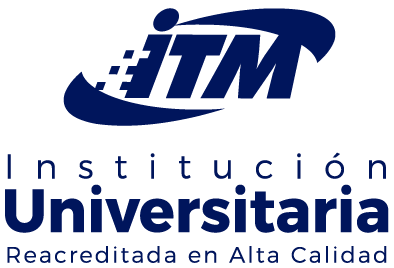Mostrar el registro sencillo del ítem
Estimation of the Environmental Risk Caused by Pesticides in Pea Crops of Ipiales, Nariño-Colombia
| dc.contributor.author | Álvarez-Sánchez, David | |
| dc.contributor.author | Chaves-Morillo, Diana | |
| dc.contributor.author | Gómez-López, Eyder | |
| dc.contributor.author | Hurtado-Benavides, Andrés | |
| dc.date.accessioned | 2021-04-21T16:55:18Z | |
| dc.date.available | 2021-04-21T16:55:18Z | |
| dc.date.issued | 2020-01-30 | |
| dc.identifier | https://revistas.itm.edu.co/index.php/tecnologicas/article/view/1404 | |
| dc.identifier | 10.22430/22565337.1404 | |
| dc.identifier.uri | http://hdl.handle.net/20.500.12622/4611 | |
| dc.description.abstract | En el municipio de Ipiales, departamento de Nariño, se concentra la mayor área cultivada con arveja (Pisum sativum) de Colombia, con cerca de 3.070 ha, en donde se ha identificado un alto uso de plaguicidas asociado al establecimiento del modelo productivo. Por tanto, el objetivo de este estudio es evaluar el riesgo de impacto ambiental que genera la aplicación de los principales fungicidas, insecticidas, herbicidas y bactericidas. Para ello, se consideraron tres grupos de campesinos, previamente identificados como C1, C2 y C3 con una muestra de diez fincas por grupo. En una parcela de cada finca se determinó la materia orgánica, pH, textura, densidad aparente, distancia a fuentes hídricas y se caracterizaron los plaguicidas usados en dos ciclos de cultivo de arveja. La información recolectada fue ingresada al sistema de soporte IIRAmb para estimar el indicador I-PHY, el cual determinó el impacto ambiental de los plaguicidas. Los resultados sugieren la presencia de 44 ingredientes activos, con un uso promedio finca de 25,1 kg/ha/año; el indicador I-PHY global presentó diferencias estadísticas significativas entre C1 (4,04) respecto a C2 (5,06) y C3 (5,28), estos últimos grupos, mostraron el mayor riesgo ambiental principalmente por el tipo de moléculas usadas y las condiciones en las cuales se desarrolló el cultivo. A partir de estos resultados se genera una herramienta de monitoreo y evaluación, con el fin de mejorar las intervenciones en el sistema para incrementar el nivel de sustentabilidad. | spa |
| dc.format.mimetype | application/pdf | |
| dc.language.iso | spa | |
| dc.publisher | Instituto Tecnológico Metropolitano - ITM | spa |
| dc.relation | https://revistas.itm.edu.co/index.php/tecnologicas/article/view/1404 | |
| dc.relation | 10.22430/22565337.1404 | |
| dc.rights | Copyright (c) 2019 TecnoLógicas | spa |
| dc.rights | http://creativecommons.org/licenses/by-nc-sa/4.0 | spa |
| dc.source | 2256-5337 | |
| dc.source | 0123-7799 | |
| dc.source | TecnoLógicas; Vol. 23 No. 47 (2020); 77-91 | eng |
| dc.source | TecnoLógicas; Vol. 23 Núm. 47 (2020); 77-91 | spa |
| dc.subject | Pisum sativum | spa |
| dc.subject | Contaminación | spa |
| dc.subject | plaguicidas | spa |
| dc.subject | indicadores ambientales | spa |
| dc.title | Estimation of the Environmental Risk Caused by Pesticides in Pea Crops of Ipiales, Nariño-Colombia | spa |
| dc.title.alternative | Estimación del riesgo ambiental causado por plaguicidas en cultivos de arveja de Ipiales, Nariño-Colombia | eng |
| dc.type.spa | Artículos | spa |
| dc.subject.keywords | Pisum sativum | eng |
| dc.subject.keywords | Contamination | eng |
| dc.subject.keywords | pesticides | eng |
| dc.subject.keywords | environmental indicators | eng |
| dc.type | info:eu-repo/semantics/article | |
| dc.type | info:eu-repo/semantics/publishedVersion | |
| dc.type | Articles | eng |
| dc.relation.ispartofjournal | TecnoLógicas | |
| dc.description.abstractenglish | The Municipality of Ipiales (Department of Nariño, Colombia) concentrates the largest area cultivated with pea (Pisum sativum L.) in the country, nearly 3.070 ha, where an extensive use of pesticides has been associated with the implementation of a production-based model. Therefore, the objective of this study is to evaluate the environmental impact of the application of the most common fungicides, insecticides, herbicides, and bactericides. For that purpose, 30 farms were divided into three groups of ten farms each: C1, C2, and C3. The organic matter, pH, texture, apparent density, and distance to water sources of the plot of each farm were determined, and the pesticides used in the two cultivation cycles of pea were characterized. The collected information was entered into a support system, IIRAmb, in order to estimate the indicator, I-PHY, which determined the environmental impact of the pesticides. The results suggest the presence of 44 active ingredients, with an average use per farm of 25.1 kg/ha/year. The global I-PHY indicator presented significant statistical differences between C1 (4.04), C2 (5.06), and C3 (5.28). The last two groups showed the highest environmental risk, especially because the type of molecules they used and the conditions under which the crops developed. These results can be used to create a monitoring and evaluation tool in order to improve the adjustments to the system and increase its sustainability. | eng |
| dc.rights.accessrights | info:eu-repo/semantics/openAccess | |
| dc.type.coar | http://purl.org/coar/resource_type/c_6501 |
Ficheros en el ítem
| Ficheros | Tamaño | Formato | Ver |
|---|---|---|---|
|
No hay archivos asociados a este ítem. |
|||

